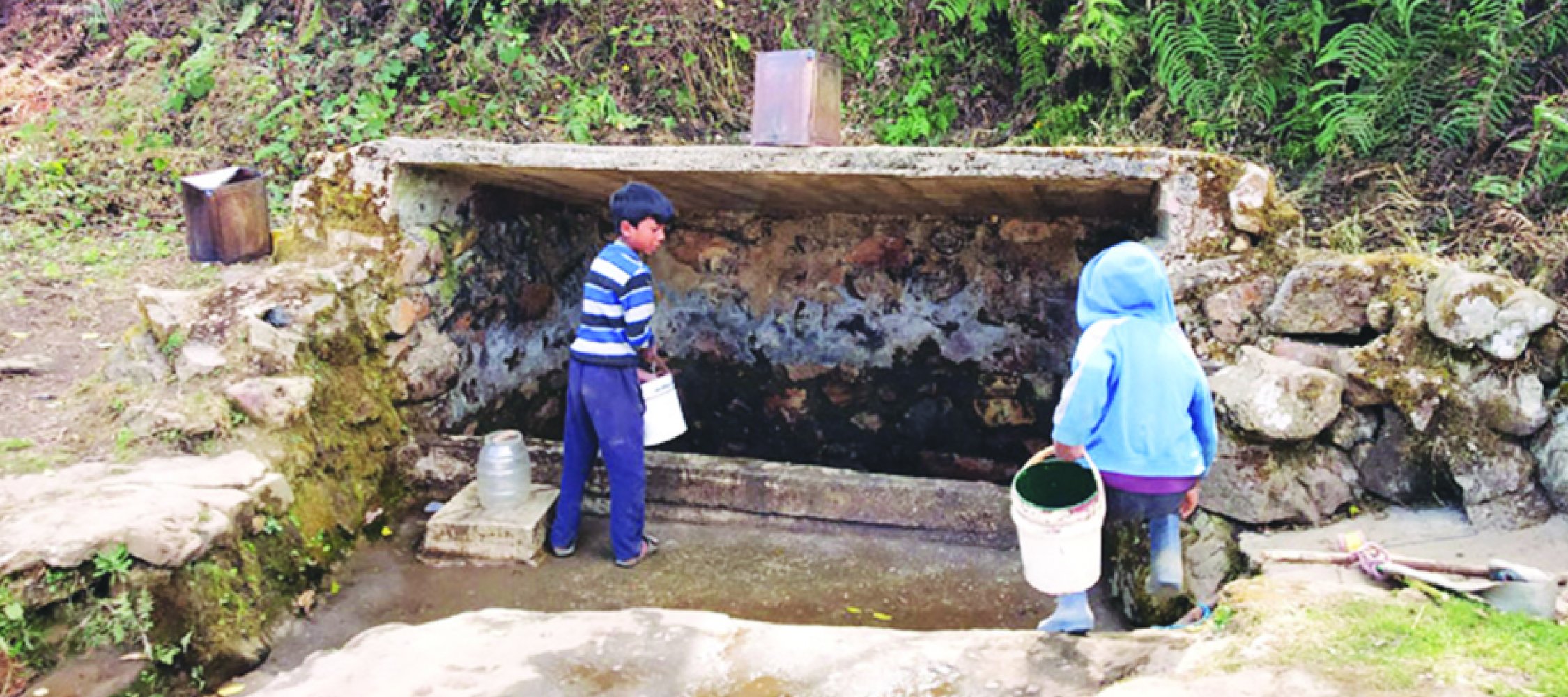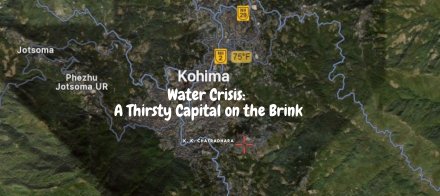 |
November 23 will be marked as a red letter day not only in the Laitkseh village and its neighborhood in the East Khasi Hills of Meghalaya, but it has earned a place in the scattered global movement to save the water sources.
On this day, the people of this village unanimously resolved to oppose a boulder mining project proposed to be set up in the boundaries of their hamlet. The village authorities had already given the project a no objection certificate (NOC), though it was not welcomed by the people who were already aware that they were living in a highly quarried region of the East Khasi Hills. But this is one of the rare villages, which had decided to give water sources and their natural surroundings top priority over and above other considerations.
The debate had grown so intense that the peoples’ views had to be taken on board. So this general meeting, locally called Dorbar Paidbah, was called to discuss the issue. This general assembly of the residents of the village had been asked to vote on the question whether the boulder mining project should be given the green signal. A lot of hard work over months of lobbying and campaigning had gone into getting the Dorbar Shnong, the traditional village council, sensitised to the adverse impact of allowing an industrial scale stone mining project in the village land.
It was tough because the village heads had already given the NOC. But the unanimous ‘No’ to the mining, peacefully closed the chapter. Every village in the Khasi Hills has a Dorbar Shnong, which looks after the welfare of the village, and draws its authority more from the Khasi tribe’s ancient customs and practices than any other laws. It consists of an executive body nominated by the people and is chaired by a headman called Sordar, who is chosen as per customary practices of the village and clans.
“The people opposed it because they felt once the stone mining project started digging around in the hills, their water would disappear as it had happened around the neighborhood and beyond,” said the Sordar of the village, Marchester Kharumnuid. Kharumnuid, in his early thirties, is one of the youngest village headmen around.
A few months back, he had inadvertently given the NOC to the proponents of the stone mining project as stone quarrying or mining per se has been going on for ages in the Khasi Hills as well as in the whole state without anyone taking an official stand against the practice.
But times seem to have changed. The inhabitants of the village were opposed to it because they had clearly linked the earth digging to the drying up of the water sources, and they were willing to take a stand on it.
Bowing to the voice of the people, the Sordar and the executive committee of the Dorbar Shnong called a general meeting of the village to discuss the issue, at the end of which the resolution to withdraw the NOC was passed.
“It was a unanimous decision. The people spoke in one voice, so we had to listen to them,” Kharumnuid said.
The public resolution was, however, preceded by months of one to one discussions over the granting of NOC to the industrial scale stone mining in their village. “Yes, our executive committee had given the go ahead, but the people were not in favour of giving any mining lease,” he explained.
The public resolution was then sent to the divisional forest officer (DFO) with a letter informing that the NOC had been withdrawn and to stop all processes that were going on to give the official permission to the mining project.
This is a rare moment of united action against the rampaging mining industry that has pockmarked the land in these areas. And at that moment, the nondescript hamlet became a shining model, a village of water protectors in a region where springs and streams are drying up with the receding greenery and catchments.
The headman pointed out that the village has no water source of its own, except the water pumped up from one of the hills in the village, which is called Lum Lyngdoh Nongbri. The government is trying to supply piped water to the population of 140 households from this source as part of the Jal Jeevan Mission.
Every household is dependent on water from outside. “We all have to buy water, which is brought by water tankers. The water supply is not enough for our village”, said the headman.
“We pay about Rs.400 for 1,500 to 1,800 liters of water every now and then,” said Kurkalang Kurkalang, who explained that water sources in the village have long dried up and that before the tankers got into business, the people had to walk more than 3 km to fetch water for drinking and cooking. They find it easier to buy water and use it sparingly.
Kurkalang is one of those rare persons who have an innate sense of community responsibility and has spent most of his time working with community-based organisations and non-government organisations to help create awareness on the issues of environment protection, livelihoods and social issues. A self-motivated social worker, one can see him urging people to get socially active about issues that affect them. The drying sources of water in and around his home village are the single most urgent issue, as far as he is concerned.
“When I was a kid, water was available within the village, especially during the rainy season,” he said. Two women in their fifties sitting nearby and listening to the conversation nodded and chipped in.
“True, as a child, I remember there were small springs and water holes around here,” said one of them. The village situated on a plateau held water with the thick shrubs, grass and trees during those past decades. Now it is virtually a desert. “Water is now available only in the lower reaches, and no one has time to fetch water from that far, so we depend on water brought by tanker jeeps,” said the other woman. “Lah tyrkhong um palat, (the water sources have totally dried up),” she said.
The view from the village shows yawning stone and sand quarries all round the surrounding hills.
“Mining has always been a traditional occupation, which many daily wage labourers depend on,” Kurkalang explains. The other occupation is cultivation of vegetable crops for the market.
Asked about the Dorbar Shnong’s ideas about safeguarding the forests and grasslands to help conserve water since they seem alive to the idea, headman Kharumnuid said that the people wanted the forests to be protected as was seen from their resolution.
“But most of the forests and lands in our village belongs to landowning clans, who give out their lands on rent and lease,” he said. The traditional land holdings are known by their clan names, such as Bri Synteng Nongdhar, Bri Lyngdoh Nongbri and Bri Kurkalang.
The entire village population depends on these clans for their lands. “Almost 99.9 per cent of the people here survive by cultivating on land that is leased out by these landowning clans. The rest of the population works in the traditional stone and sand quarries as daily wage laborers. Seventy per cent of the people fall below the poverty line,” he said.
The headman said that they had to try and tell the landowners to safeguard the forests on their lands so that water and environment in the aea would be saved, and the future generations survive. However, he said so far there was no official resolution of the Dorbar Shnong to take up this issue officially.
“But it is time that we think about it in our village council and find out how we can get the cooperation of the landowners,” he said. It is a sensitive situation. The village folks are entirely dependent on the goodwill of the landowning clans. Not that much forested land is left as about 80 per cent of the land is under cultivation.
However, a start has been made with the Dorbar Shnong deciding to plant trees and create a community forest in a small plot of land that belongs to the village under a project funded under the Mahatma Gandhi National Rural Employment Agency (MGNREGA).
“During my school days, I used to get water from nearby springs. None of them is left now, except one, which is about 3 km from my home,” Kurkalang said, heading for that oasis.
The sight of the last spring Kurkalang spoke about was a testimony of how natural ecology works. It was a tiny copse of about 10 trees, protectively standing on the hill slope hugging the spring – a trickle flowed out of the hillside to form a tiny precious pool of sparkling water. This patch of trees was surrounded by a countryside that was totally degraded by decades of sand mining and stone quarrying.
“See, it’s only because of these trees and shrubs that this one still has water to give us,” he said. It was indeed the only place where people could get free water. All day long, there was a trail of people coming to collect water from the little pool. It took time for the water to gather. But people waited for it because not only did they not have to pay for it, they found it more thirst quenching than the piped water or the water brought in tankers from the river a few kilometres away.
For Kurkalang, it was “a living testimony of the truth that forests protect water and promote biodiversity, and that is why the forests, wherever they are, have to be protected, or else they will all become like our broken hills here”, he said.


